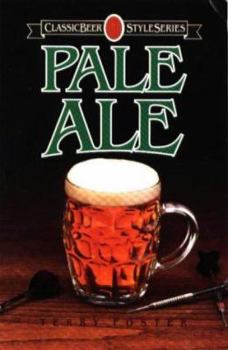Book Overview
Tip over your sacred cows of belief , dump your personal prejudices and biases, and begin to rebuild a spiritual lifestyle that really works. What does it mean to live a spiritual and purposeful life?... This description may be from another edition of this product.
Format:Paperback
Language:English
ISBN:0937381187
ISBN13:9780937381182
Release Date:January 1998
Publisher:Brewers Publications
Length:140 Pages
Weight:0.50 lbs.
Dimensions:0.4" x 5.5" x 8.5"
Related Subjects
Beer Cooking Cooking Drinks & Beverages Education & Reference History Holiday Cooking ReferenceCustomer Reviews
3 ratings
Excellent book, a little slanted, but good!
Published by Thriftbooks.com User , 18 years ago
I just got this book from the local library and read it in an afternoon. I'm an amature homebrewer, by no means an expert, but this book allowed me to learn a great deal about brewing in general, not just the Pale Ale family. I am very interested in doing some of the all-grain recipes listed in the book. Let us start at the beginning of this book, Foster covers a brief history of Pale ale, establishing that the three Ales are very similar and that the distinctions he makes for ease of learning are by no means universal. He then begins the discussion over the characteristics. His discussion includes many different variables in the brewing process, including the use of adjuncts. Interestingly enough, he does not outrightly condem the usage of additives, he does give a list of benefits and detriments to caution the brewer in his usage of additives. Shortly after this Foster begins a lengthy discussion on the storage and carbonation of beer. Foster does a good job of describing the different characteristics of the ales and how to get those characteristics into your own beer. The only reason that I give this book a 4 instead of 5 is because Foster spends far too much time explaining how to put Pale ale into wooden casks. I understand that he really enjoys this, but he mentions several times that people will never want to really deal with wooden barrels. I would have liked to learn more about the specific styles of breing and how they can be implemented in a home-brew setting. Over all, read this book. If you're serious about brewing a good IPA (and inviting the author over to taste it, which he say's he'll not refuse!), buy this book. If you just want to sound smart drinking with your buds, get it from the library.
Very readable and informative book on this style
Published by Thriftbooks.com User , 19 years ago
This is a brief but excellent book on pale ale. Having read George Fix's fairly technical Principles of Brewing Science, and Lee Janson's Brew Chem 101 book before this, which are heavily biochemisty oriented, focusing on topics like fermentation and non-enzymatic browning, I thought I'd try this book, which is devoted to the more practical aspects of brewery operations. It was recommended to me by someone I know who runs a very successful local microbrewery operation (who should know about something about ale) and it's a very readable, informative, and well written book with a lot of good information on this important style. Foster covers the history of the style and how pale ale developed over the years, including relatively recent developments like India pale ale and other substyles. There is a chapter just on the character and profile of a pale ale and what defines it in terms of ingredients, flavor, and aroma. For example, you learn the typical British malt is a two-row pale malt that is low in nitrogen, compared the American counterpart which is six-row, and has more starch-degrading enzymes, which is why so many extra non-malt adjuncts such as rice and corn can be added to the brew since these enzymes can process rice and corn starch also. Besides discussing the essential ingredients of the pale ale style such as hops, yeast, malt, and water, there is a good chapter on brewery equipment, such as the "beer engine" (which is just a hand pump), kegs, wooden casks, cask making, prepration, maintenance, and cleaning, taps, and so on. This being more of a practical volume, there are also sections on casking, cellaring, conditioning, and packaging. The book concludes with a nice chapter on classic pale ale recipes and descriptions, which discusses important examples of the style found in the U.S. and Britain. You'll likely find several examples of your favorite brews discussed here as well as others you may not be familiar with. On a side note, it was also fascinating to learn that some of the larger British breweries in the 19th century became so successful that their tubs could hold 200 to 300 people, and dinners were often held in them to inaugurate their use prior to being placed into operation. Also, there is a great photo of a guy on tall stilts walking around a hopyard, which is titled "Early springtime preparation of an English hopyard." I don't know why they do this but you have to see the picture to appreciate it, since they're very tall stilts. :-) At just 134 pages, this is a brief but wonderfully informative and readable book on pale ale. Even if you're not a home-brewer, if you love pale ale you should read this book. You'll acquire a wealth of knowledge which will further enhance your appreciation of this important style of beer.
Must read for any serious brewer.
Published by Thriftbooks.com User , 25 years ago
Foster's Pale Ale is essential for anyone serious about brewing or homebrewing. Foster canvases the history of Pale Ale, IPA, and bitter, and analyzes the character profile of these beers in detail. Foster also addresses the preferred ingredients and methods which are often taken for granted and overlooked in this common and popular style. Pale Ale also contains a good section on cask conditioning and serving ale from the wood. If you brew, read this book.





